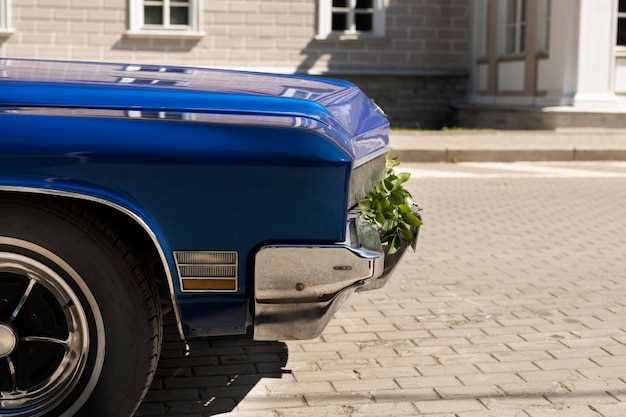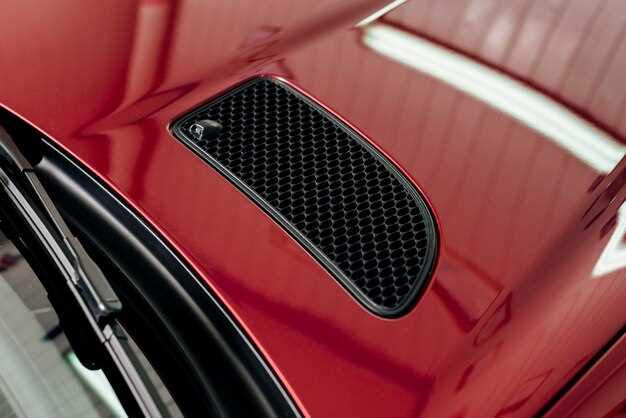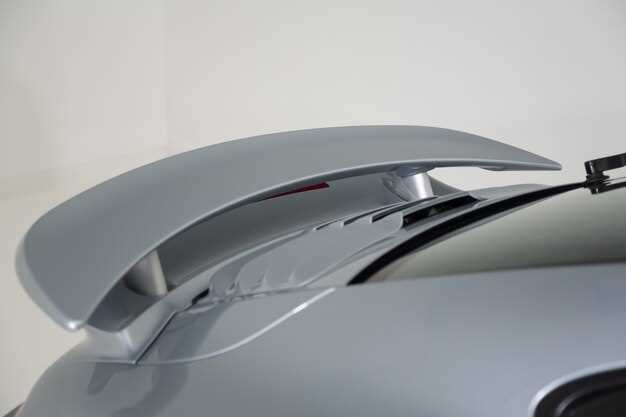

The Mustang has long been a symbol of American muscle and style, attracting car enthusiasts who seek to personalize their ride. One of the most effective ways to make your Mustang stand out is through the installation of various body kits. These mods not only enhance the visual appeal but can also improve aerodynamics and performance.
Choosing the right body kit involves considering factors such as design, materials, and compatibility with your specific Mustang model. From aggressive front splitters to sleek rear diffusers, there are numerous options available that cater to different aesthetics and performance needs. The right kit can truly transform the look and feel of your vehicle, making it uniquely yours.
In this article, we will explore some of the top body kits currently available on the market for customizing your Mustang. Whether you’re looking for a full package or just a few key mods, we’ll provide insights to help you make an informed decision and elevate your Mustang’s style and performance.
Choosing the Right Material for Your Mustang Body Kit

When it comes to customizing your Mustang, selecting the right material for your body kit is crucial for achieving the desired visual impact and performance. Each material has its own pros and cons, and understanding these can help you make an informed decision for your mods.
Here are the most common materials used for Mustang body kits:
- Fiberglass:
- Lightweight and cost-effective.
- Offers a smooth finish for painting.
- Can be prone to cracking under stress.
- ABS Plastic:
- Durable and impact-resistant.
- Flexible and less likely to crack.
- Can be painted easily, providing excellent visual customization options.
- Carbon Fiber:
- Extremely lightweight and strong.
- Provides a high-end, sleek appearance.
- More expensive than other materials.
- Polyurethane:
- Highly flexible and resistant to damage.
- Offers a great balance between durability and cost.
- Can be molded into complex shapes for unique visual mods.
When choosing the right material for your Mustang body kit, consider the following factors:
- Budget: Identify how much you are willing to spend on mods and choose a material that fits within that range.
- Usage: Consider how you use your Mustang. For daily driving, durability may be more important than weight. For track use, lightweight materials like carbon fiber could be beneficial.
- Visual Appeal: Match the material to your overall design vision. Some materials can provide a more polished look than others.
Ultimately, the right material for your Mustang body kit will depend on your specific needs and preferences. Evaluate each option carefully to ensure that your chosen mods enhance both the performance and the aesthetic of your vehicle.
Step-by-Step Installation Guide for Mustang Body Kits

Installing a body kit on your Mustang can significantly enhance its visual appeal and performance. Follow this step-by-step guide to ensure a successful installation.
Step 1: Gather Your Tools and Materials
Before you begin, ensure you have all necessary tools at hand. You’ll need the following: a socket set, screwdrivers, a wrench, adhesive, and a heat gun. Additionally, your chosen body kit should be ready for installation.
Step 2: Prepare Your Mustang
Clean the surface of your Mustang thoroughly. Remove any dirt, grease, or wax to ensure a proper fit and adhesion for the body kit. It’s recommended to wash the car and let it dry completely.
Step 3: Test Fit the Body Kit
Before permanently attaching any pieces, loosely test fit the body kit components to your Mustang. This step will help you identify any adjustments needed to achieve a seamless installation.
Step 4: Mark the Attachment Points
Once you are satisfied with the fit, mark the locations where the body kit will attach. This will guide you during the installation process, ensuring that everything aligns perfectly.
Step 5: Attach the Body Kit Components
Starting with the largest pieces, begin attaching the body kit. Use the appropriate hardware included with your kit, ensuring a snug fit without overtightening to avoid damage. For areas requiring adhesive, apply it according to the manufacturer’s instructions.
Step 6: Install Smaller Components
After the main parts are secured, move on to the smaller components like side skirts and rear diffusers. Follow the same procedure as before, ensuring they are firmly attached and aligned with the vehicle’s contours.
Step 7: Final Adjustments
Check all attachments for fit and ensure everything is securely fastened. Make any necessary adjustments to achieve a smooth and even appearance across all body kit sections.
Step 8: Clean Up
Once installation is complete, clean any excess adhesive and remove any debris from your work area. Ensure your Mustang is looking its best with all components properly installed.
Step 9: Take a Test Drive
Before showing off your newly customized Mustang, take it for a short drive to ensure that all components are secure and functioning correctly. Pay attention to any unusual sounds or performance issues.
With these steps, you will successfully enhance the visual aspect of your Mustang while ensuring optimal performance with your new body kit. Enjoy your ride!
Popular Visual Modifications to Pair with Body Kits
When customizing your Mustang with body kits, it’s essential to consider additional visual mods that can enhance the overall aesthetic and performance. These modifications not only complement the body kit but also contribute to a more aggressive and standout appearance.
One common mod is the installation of a custom front grille. A distinctive grille can change the front fascia’s look significantly, allowing for a more personalized style. This modification often pairs well with an aggressive body kit, giving your Mustang a fierce presence on the road.
Another popular visual modification is upgrading the headlights and taillights. Switching to LED or aftermarket projection lights can instantly elevate your Mustang’s style. Choosing designs that match the body kit’s aggressive lines enhances the overall cohesiveness of the vehicle’s appearance.
Wheel upgrades are also a vital aspect of visual customization. Wider and sportier wheels can improve stance and complement the body kit’s design. Selecting the right finish, such as matte black or chrome, can create an aesthetically pleasing contrast that enhances the overall look.
Lastly, adding stylish decals or vinyl wraps can provide a unique touch to your Mustang. Graphic designs, stripes, or matte finishes can accentuate the body kit while allowing for personal expression. Careful selection of colors and designs can harmonize with the kit’s lines and features.
In summary, integrating these visual mods with your body kit not only enhances aesthetics but also emphasizes your Mustang’s individuality, making it truly stand out in any setting.





